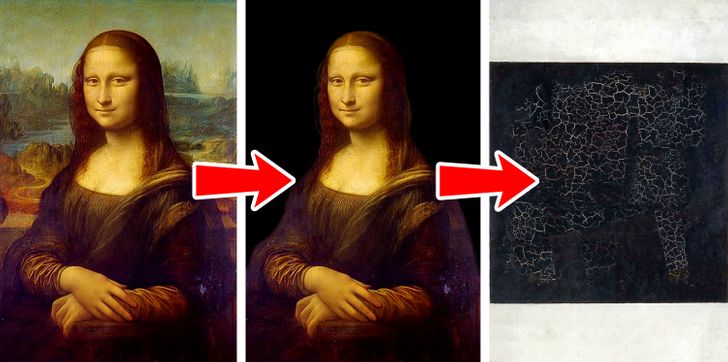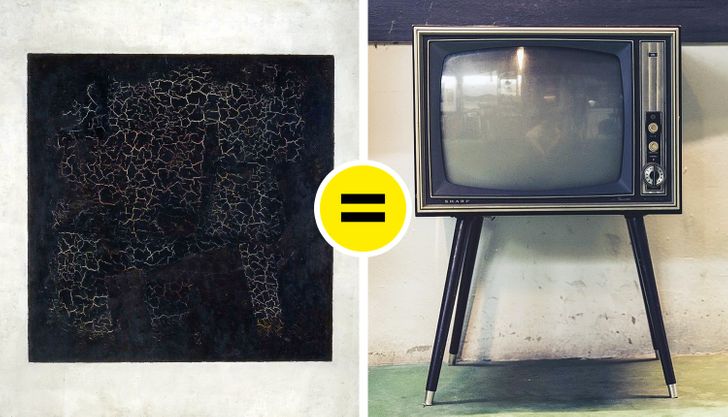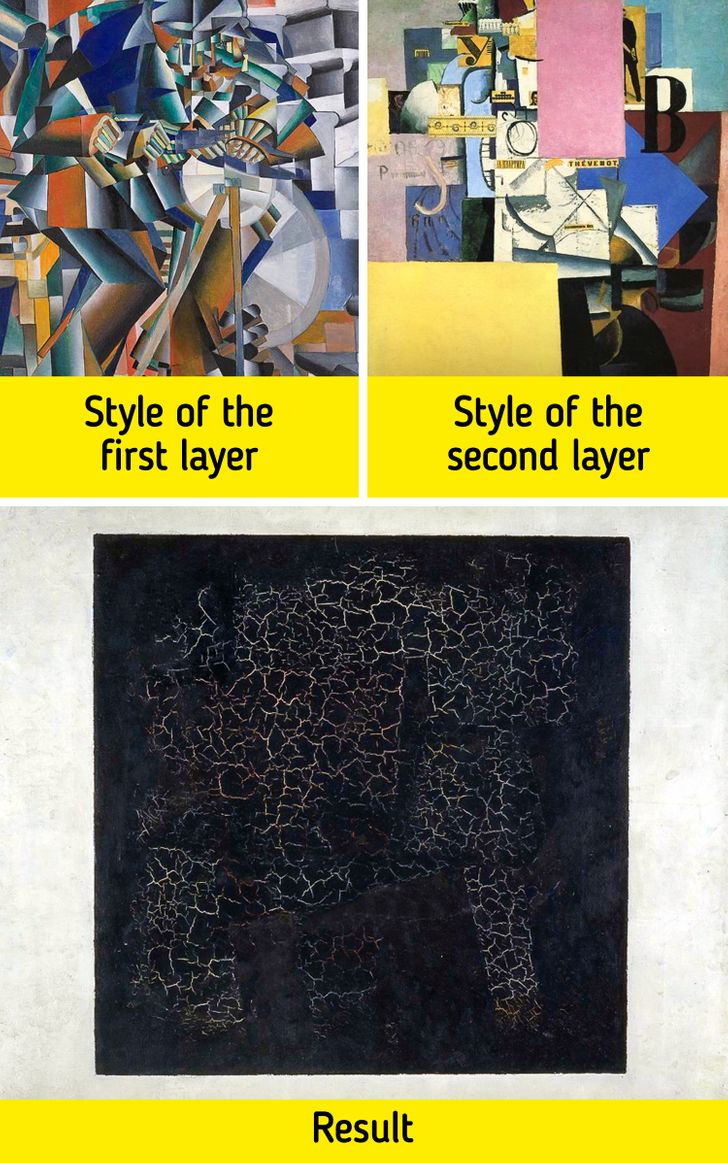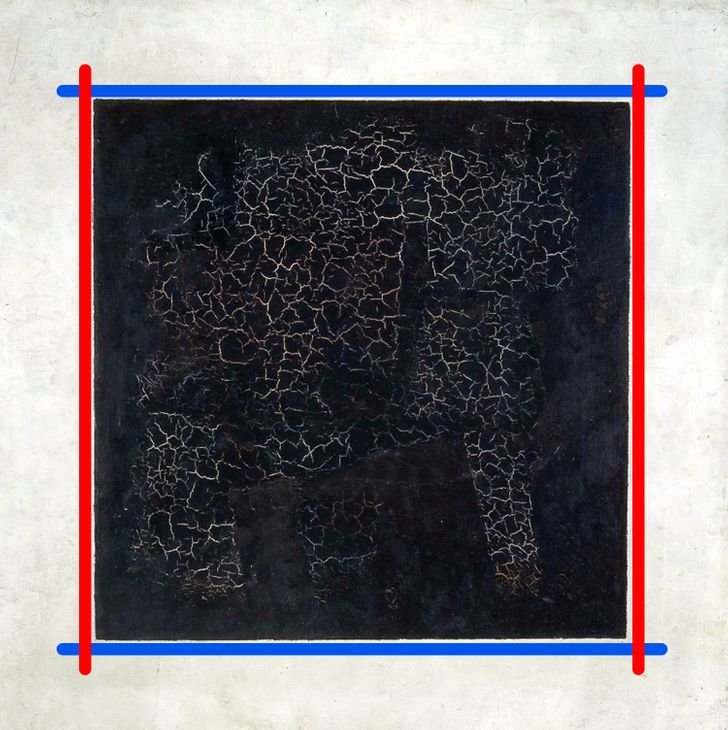Bb nun gghjj JJ HB oh u in n gn mh
4 Theories to Help You Understand the Meaning of “Black Square” in 5 Minutes
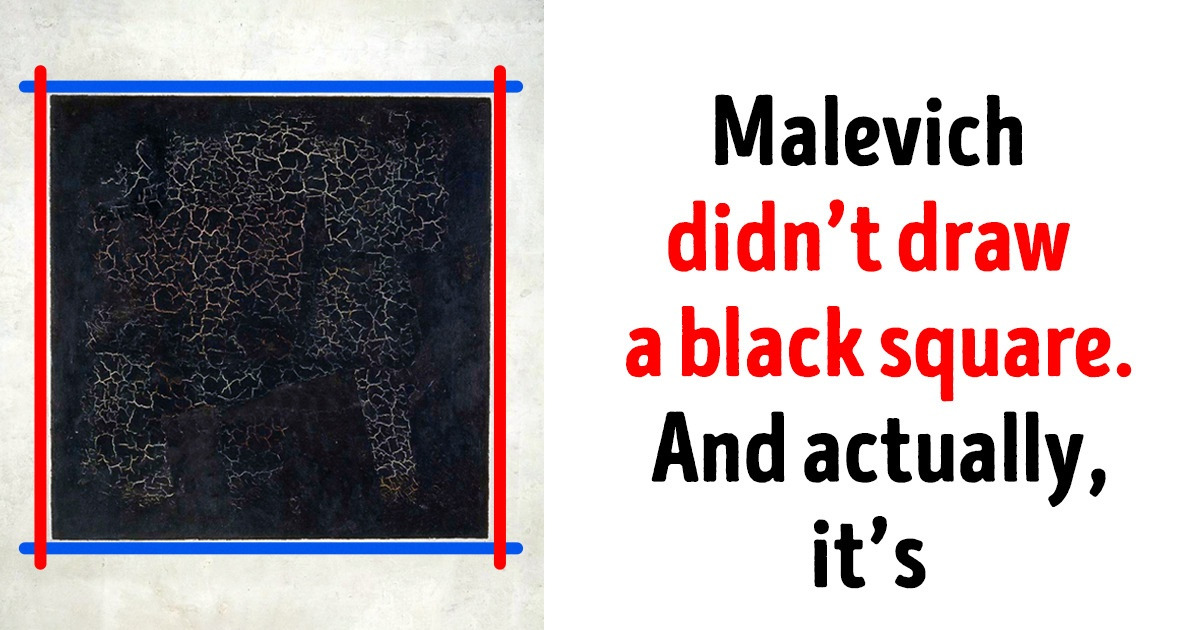
When looking at modern art, many people say things like, “What’s so special about this? I could do this myself!” Kazimierz Malevich’s Black Square probably gets this reaction a lot. Almost every visitor said these words at the exhibition in 1980. So, why is a simple black square on a white background such a big deal in the art world?
We at Bright Side have reviewed very different — and even opposing — approaches to Black Square and have made a guide about the painting for you. These 4 theories will help you understand if this painting is a masterpiece or if any old child could recreate it. And in the bonus feature, you’ll find out what scientists found underneath the top layer.
1. Black Square is a metaphor for art itself.
Kazimierz Malevich contrasted his Black Square to traditional art. And it’s surprising that the Black Square can be found in any traditional painting.
If you take the Mona Lisa and remove the background — the clothes and the woman — what do you have left? An empty canvas, a blank page — otherwise known as a black square. So, if you remove the subject from art, you’ll always get a black square — art in its purest form without any extra additives.
Malevich didn’t like the fact that art was only a reflection of reality. He was against trying to portray the 3D-reality on a 2D-canvas. Malevich wanted to free art, so he created Black Square.
2. Black Square is ground zero.
According to an expert of Russian avant-garde art, Tatyana Goryacheva, Black Square is the ground zero of form and color and is a new starting point in the history of art. This is because the square is the simplest shape, and black is not even a color.
Black Square is the beginning of the rebellion, a revolution from classic art to suprematism. The painting feels like nothing — it’s emptiness and the absence of an image. This way, it’s the beginning of a new direction.
3. Black Square is a TV that’s turned off.
More modern ideas explain Black Square as a turned-off screen. At first, the image was harmonious and showed reality. Then, it started to get messy. When someone tried to fix the antenna, things got even worse and then someone turned the TV off.
The changing image on the screen is a metaphor of the path of art from classic and realism to futurism and cubism. The person that turned off the screen that wasn’t showing anything good anymore is Malevich himself and his TV is the Black Square.
4. Black Square is a sign of Malevich’s bad temper.
Alexandre Benois, an artist, critic, and contemporary of Malevich’s, said of the Black Square: “This black square in a white frame — this is not a simple joke, not a simple dare, not a simple little episode which happened at the house at the Field of Mars. Rather, it’s an act of self-assertion of that entity called ’the abomination of desolation,’ which boasts that through pride, through arrogance, through trampling of all that is loving and gentle it will lead all beings to death.”
So, according to Benois, the painting wasn’t art. Malevich just wanted to do something big and ended up showing the worst sides of himself and humiliated art with his painting. The artist didn’t argue with that but he said he was happy that he was different from other artists.
Bonus: what was found under Black Square
In 2015, experts at the Tretyakov Gallery studied the painting with X-rays, UV-light, microscopes, and other tools. The scientists were interested in the bright paint seen through the craquelures. They knew something else was underneath the painting.
They were amazed when they found not one but 2 new paintings under the upper layer and something more.
- The first layer was a painting that looked similar to the 1913 piece, The Knife Grinder Principle of Glittering by Kazimir Malevich. It had pink, green, and orange colors. It was finished and the paint was dry — it even had its own craquelures.
- The second layer was a painting in the proto-suprematism style, similar to Lady at the Poster Column by Malevich. It didn’t have the numbers and shapes that were typical for cubism and the colors were brighter.
- Researchers found Malevich’s fingerprints.
- Also, under the square, they found the words, “Negroes fight in a tunnel.” This is a reference to an earlier work by another artist. In the 1880s, Alphonse Allais drew a black square and titled it, Negroes Fight in a Tunnel.
- When the experts read the words, they realized that before, the square had always been exhibited upside-down.
It’s also worth noting that Black Square is not actually black and not really a square. The sides of this geometric shape are not equal nor are they parallel to each other or the sides of the frame.
And the color inside the shape isn’t really black. Malevich mixed 3 paints: black ochre, organic burned bone, and surprisingly, copper arsenate, which has a dark-green color. He also added some chalk to remove the shine. And the digital version of the painting actually has 18,000 colors.
The meticulous choice of color and the dynamic shape indicate the fact that Black Square wasn’t a spontaneous piece that resulted in him wanting to draw something quick and simple. It was a result of long and hard work.
Which theory about this painting do you agree with most?
Comments
Related Reads
10+ Tricks Manufacturers Use to Fool Their Customers

I Accidentally Discovered the Nasty Reason My Fiancé Decided to Marry Me

I Stopped Training an Intern After She Told Me to, and Now the Truth Came Out

13 Discoveries That Changed How People Saw Their Partners

I Refuse to Be Exploited as a Free Babysitter on My Hard-Earned Retirement Cruise

A Server Humiliated My Wife During Our Family Lunch—I Made Sure Everyone Knew

My Son Banned Me From Seeing My Grandkids, So I Finally Taught Him the Lesson He Needed

22 People Who Found a Hidden Treasure Where They Least Expected It

15 Times Small Acts of Kindness Made a Giant Difference

10 Stories That Prove Blended Families Are Equal Parts Chaos and Love

15 Moments That Remind Us Horror Isn’t Just in the Movies

20 Vacation Stories That Are Way More Interesting Than a Postcard

